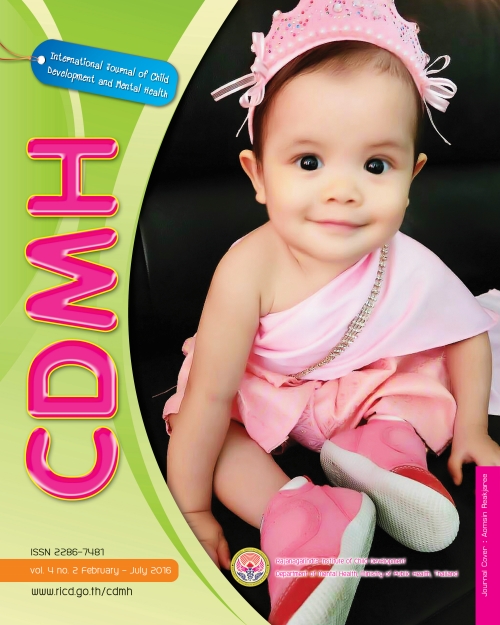Factors Associated With Age of Diagnosis Among Myanmar Children with Autism Spectrum Disorders
Main Article Content
Abstract
This study aimed to find out the average age of diagnosis, and factors associated with the age of diagnosis, among Myanmar children with Autism Spectrum Disorders. A cross-sectional descriptive study involving 84 children from two private special schools, namely New World and Light House. All children who were diagnosed as ASD, according
to DSM-IV criteria, were involved in this study. Data was collected from the caregivers by face-to-face interviewing. Physical examinations and investigations were done as necessary. Results: A total of 84 children with ASD were included in this study. The mean age of diagnosis was 3.5 years old. The minimum age of diagnosis was 1 year old and the maximum was 6 years old. There were significant findings regarding factors associated
with the age of diagnosis. A higher educational standard of the child’s father, and some autism specific signs such as lack of pointing out objects of interest, and poor response to name being called, were associated with an earlier age of diagnosis of autism spectrum disorders. The presence of persistent preoccupation with parts of objects, the presence of selective eating habits and comorbid conditions like epilepsy and global delay, had been found to delay the age of diagnosis of ASDs. This study revealed information regarding
the age of diagnosis among Myanmar children with ASD, and factors associated with the age of diag-nosis. Although this study could not represent the whole population, due to its limitation in sampling size and study area, the findings will contribute to future research being done in different places, including urban, as well as rural areas, with larger populations, which would result in a later age of diagnosis. Identified discrepancies in the age of diagnosis based on certain socio-demographic and clinical variables highlight the need for coordinated strategies for early detection of autism spectrum disorders.
Article Details
![]()
Creative Commons License
This work is licensed under a Creative Commons Attribution-NonCommercial-No Derivatives 4.0 International (CC BY-NC-ND 4.0)
The authors retain copyright and permit the journal the copyright of first publication
Articles, once having passed the review process and accepted for publication in the CDMH Journal, are copyrighted under the CDMH Journal, Department of Mental Health, Ministry of Public Health. Please be aware distribution of CDMH Journal content for commercial purposes without permission is expressly prohibited. However, distribution with intent to educate, advocate, or spread awareness within the general public and research communities is permitted and encouraged with the understanding that the CDMH Journal Editorial Board do not hold jurisdiction or liability for any accompanying comments, text, or information from third parties, either in favor for or against the original article’s assertions, conclusions, methodology, or content.


